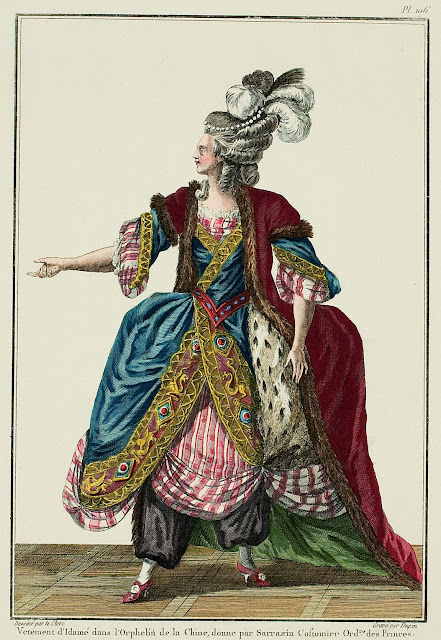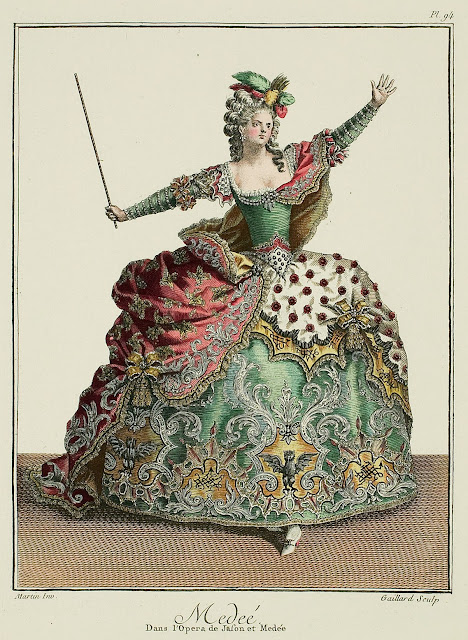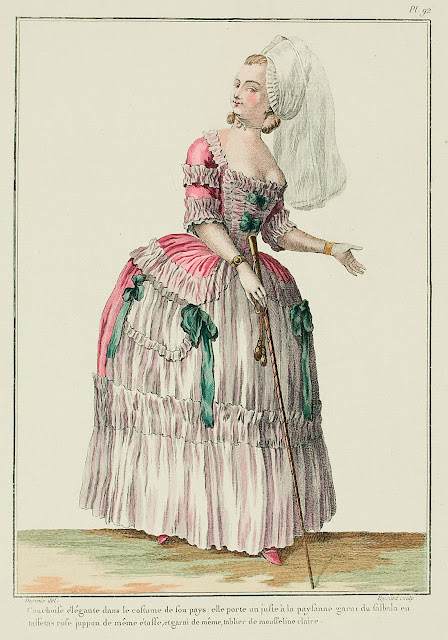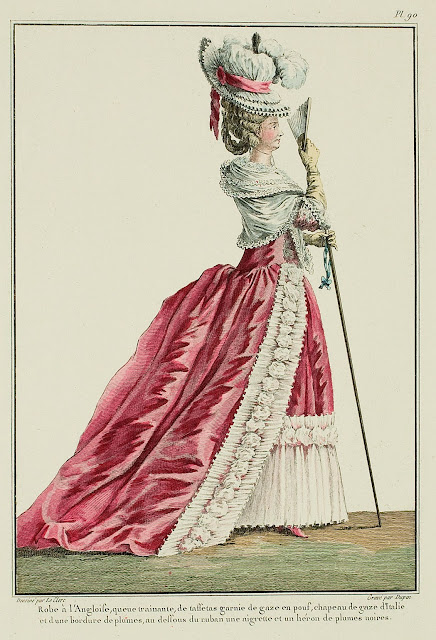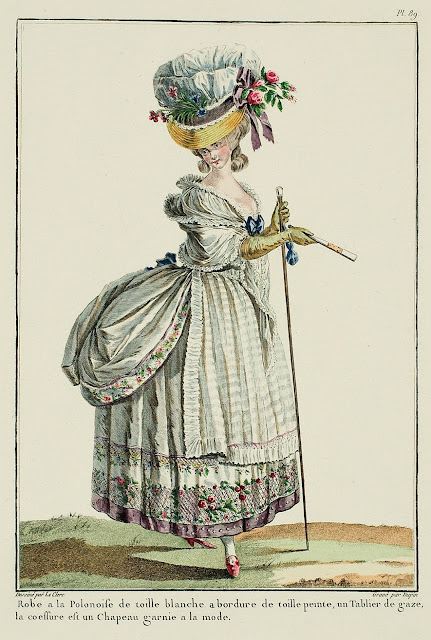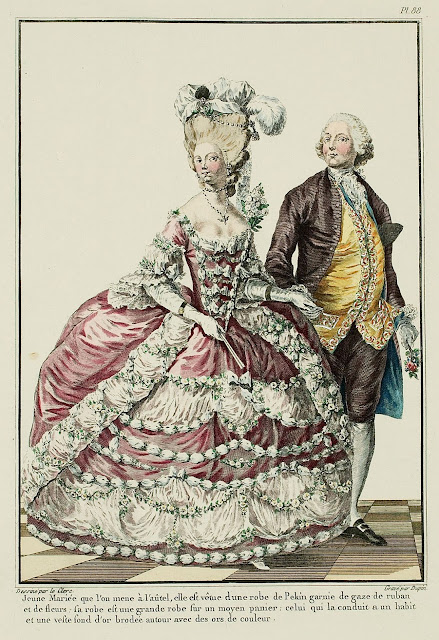Medea: from the Opera of Jason and Medea. (1779) Apollon: from the Opera of Phaeton. (1779) 24th, 25th, and 26th CAHIER. Theatrical Dress, for Balls and for Characters. These Outfits, numbering eighteen, have been sufficiently described in the caption which accompanies them. They are nearly all the invention of Jean-Baptiste Martin, who has been the Designer for the Opera for twenty-five years, and who has engraved the greater part of them; they are all of a richness and magnificence without equal; but this same richness, often embarrassing and always expensive, has been found, for some times, in less important Dress, and that one may be able to renew more often, without multiplying the expense. Recourse has been made to light materials, gauzes of cloth of artificial gold and silver, lamés, fringes, links and sequins, imitating the most precious stones; and the Dress is constructed with an éclat which makes the illusion, and procures even more of an effect o...
